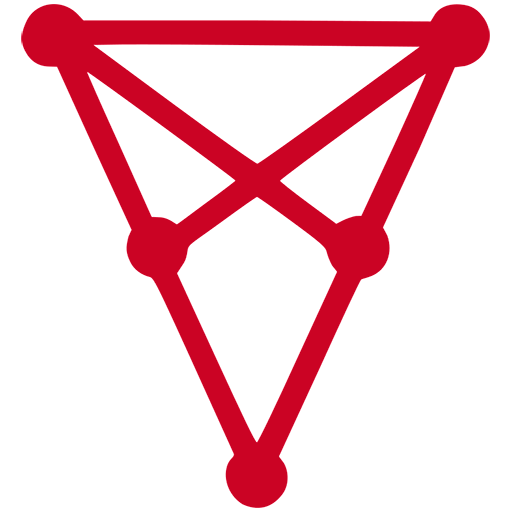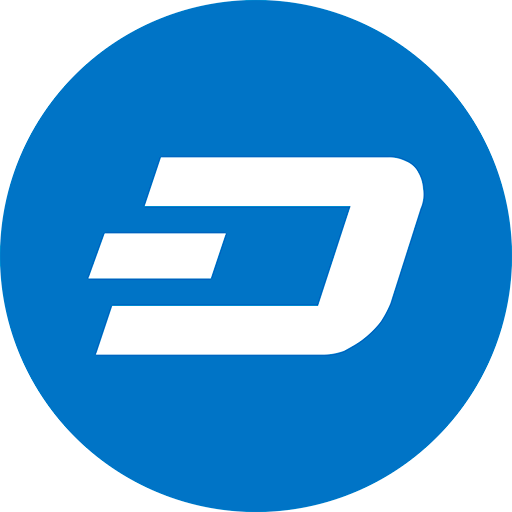Zilliqa (ZIL) Price, Market Cap and Information
| Zilliqa (ZIL) | Buy Zilliqa Now |
|---|---|
 |
Zilliqa is the world's first high-throughput public blockchain platform- designed to scale to thousands of transactions per second. Zilliqa brings the theory of sharding to practice with its novel protocol... |
| CVIX | 39 |
| Current price | $0.014005 |
| Change 24h | -2.22% |
| Change 7d | -9.40% | Market Cap | $267 238 568 |
| Available supply | 19 081 842 955 ZIL |
| Volume 24h | $11 871 312 |
| Updated | Sunday, October 27, 2024 6:00:35AM UTC |
| Nature | Coin |
| Mineable | No |
| Discussion | |
| WWW | Website |
Zilliqa price change 24 hours
Zilliqa Short Term Forecast
| After | Price | Change |
| 1 day | $0.012673 | -9.73% |
|---|
Zilliqa General Information
General ZIL facts, technical details and Zilliqa Cryptocurrency information
Zilliqa is a public, permissionless blockchain that is designed to offer high throughput with the ability to complete thousands of transactions per second. It seeks to solve the issue of blockchain scalability and speed by employing sharding as a second-layer scaling solution. The platform is home to many decentralized applications, and as of October 2020, it also allows for staking and yield farming.
Development work officially started on Zilliqa in June 2017, and its testnet went live in March 2018. A little over a year later, in June 2019, the platform launched its mainnet.
The native utility token of Zilliqa, ZIL, is used to process transactions on the network and execute smart contracts.
Who Are the Founders of Zilliqa?
Zilliqa was first conceived by Prateek Saxena, an assistant professor at the National University of Singapore School of Computing. Saxena and several students in the School of Computing published a paper in 2016 that outlined how a sharding-focused blockchain could improve network efficiency and speed.
Around the same time, Saxena co-founded Anquan Capital alongside Max Kantelia, a lifelong finance and tech entrepreneur, and Juzar Motiwalla, former president of the Singapore Computer Society. The company incorporated Zilliqa Research in June 2017 to develop the Zilliqa network, bringing on Dong Xinshu as its CEO, Yaoqi Jia as its chief technology officer and Amrit Kumar as its chief scientific officer. All three previously worked as research fellows at the NUS School of Computing.
What Makes Zilliqa Unique?
Zilliqa claims to be the world's first public blockchain to rely entirely on a sharded network. This allows it to achieve high throughput and a high rate of transactions per second, which it says solves the scalability issue. Because each shard processes transactions individually, as the network grows and the number of shards increases, the number of transactions that can be processed per second also increases. As well, records are immediately added to the Zilliqa blockchain after being processed, meaning that no additional time for confirmation is required.
Zilliqa seeks to become the blockchain of choice for large-scale enterprise use, including among the advertising, gaming, entertainment and financial services and payments industries. In its 2018 position paper, its team states that the platform "aims to rival traditional centralized payment methods such as VISA and MasterCard."
Both Anquan Capital and Zilliqa Research, the company responsible for developing Zilliqa, hold significant reserves of ZIL.
How Many Zilliqa (ZIL) Coins Are There in Circulation?
Zilliqa has a fixed maximum supply of 21 billion tokens. ZIL was first made available for sale as an ERC-20 token as a part of a token generation event that concluded in January 2018. The tokens were subsequently transferred to the Zilliqa mainnet in a token-swap event that concluded in February 2020.
Before launching, Zilliqa generated 60% of all tokens (12.6 billion ZIL) to be distributed at the token generation event, and the remaining 40% (8.4 billion ZIL) will be created through the mining process. Ten percent of all tokens (2.1 billion ZIL) were reserved for Anquan Capital, 12% (2.52 billion ZIL) for Zilliqa Research, and 5% for contemporary and future Zilliqa team members — all of which were announced to be distributed quarterly over a three-year period.
Zilliqa is designed such that all tokens will be minted within 10 years, with the block mining reward slowly decreasing. According to its whitepaper, the project aims to have 80% of the tokens (16.8 billion ZIL) mined within the first four years and 20% (4.2 billion ZIL) in the remaining six years.
How Is the Zilliqa Network Secured?
The Zilliqa network is secured through a practical Byzantine Fault Tolerance, or pBFT, consensus protocol, meaning that at least two-thirds of all nodes must agree that a record is accurate in order for it to be added to the blockchain. Each Zilliqa blockchain shard relies on a group of nodes to confirm a subsection of all the transactions, and once each shard has reached a consensus, a second group of nodes confirms the shards' collective results and adds a new block to the blockchain.
The network uses elliptic-curve cryptography to secure its consensus protocol and allows for multisignatures. In addition to the pBFT consensus protocol that secures its transaction records, Zilliqa also uses a proof-of-work algorithm to assign node identities and generate shards.
Zilliqa developed a new language, Scilla, for its smart contracts. Short for Smart Contract Intermediate-Level Language, Scilla is a safety-focused language intended to automatically identify and eliminate security vulnerabilities at the language-level and make it easier to formally verify the safety of smart contracts through mathematical proofs.
Where Can You Buy Zilliqa (ZIL)?
Zilliqa's native token, ZIL, is listed on several major cryptocurrency exchanges — including Binance, Huobi, Bitfinex and Bithumb — where it is available to be traded against fiat currencies, stablecoins and other cryptocurrencies.
Zilliqa Historical Data – 10 days
| Date | Open, $ | Min, $ | Max, $ | Market cap, $ |
|---|---|---|---|---|
| Oct 18 | 0.014646 | 0.014630 | 0.014962 | 284 998 793 |
| Oct 19 | 0.015120 | 0.015120 | 0.015697 | 291 605 609 |
| Oct 20 | 0.015405 | 0.015249 | 0.016138 | 307 533 100 |
| Oct 21 | 0.016011 | 0.015383 | 0.016079 | 302 624 255 |
| Oct 22 | 0.015734 | 0.015014 | 0.015734 | 292 655 707 |
| Oct 23 | 0.015249 | 0.014410 | 0.015249 | 279 007 956 |
| Oct 24 | 0.014604 | 0.014521 | 0.015228 | 289 405 482 |
| Oct 25 | 0.015200 | 0.014658 | 0.015257 | 280 467 154 |
| Oct 26 | 0.014041 | 0.013895 | 0.014336 | 266 195 447 |
| Oct 27 | 0.013981 | 0.013918 | 0.014060 | 267 238 568 |
ZIL/USD Price Charts
ZIL to USD price chart – 7 days
ZIL to USD price chart – 30 days
ZIL to USD price chart – 60 days
ZIL to USD price chart – 6 months
* Crypto Rating accepts no liability for any errors in the Zilliqa information, ZIL Prices and ZIL's Market Cap. For the most up-to-date prices please visit the Zilliqa's official website.
Top Cryptocurrencies with Price Predictions
| # | Crypto | Prediction | Accuracy | CVIX | Price | 24h | 7d | Market Cap | 7d price change | |
| 1 | Bitcoin predictions | 80.4% | 28 | $67 082.34 | 0.04% | -1.64% | $1 326 457 752 144 | |||
|---|---|---|---|---|---|---|---|---|---|---|
| 2 | Ethereum predictions | 84.8% | 28 | $2 479.23 | 0.46% | -6.09% | $298 502 873 223 | |||
| 3 | Tether predictions | 96% | 1 | $0.998584 | -0.01% | -0.13% | $120 134 116 287 | |||
| 4 | Binance Coin predictions | 90.4% | 11 | $584.38 | 0.37% | -1.92% | $85 278 919 638 | |||
| 5 | Solana predictions | 70.8% | 53 | $172.50 | 3.51% | 8.21% | $81 106 793 926 | |||
| 6 | USD Coin predictions | 95.6% | 1 | $0.999795 | -0.02% | -0.01% | $34 672 116 067 | |||
| 7 | XRP predictions | 80.8% | 28 | $0.514486 | 0.35% | -5.01% | $29 228 888 352 | |||
| 8 | Dogecoin predictions | 65.2% | 78 | $0.137816 | 3.00% | -2.30% | $20 195 232 473 | |||
| 9 | TRON predictions | 95.6% | 2 | $0.165938 | 1.12% | 6.13% | $14 351 212 392 | |||
| 10 | Toncoin predictions | 86.8% | 23 | $4.94 | 0.23% | -6.44% | $12 545 577 715 | |||
| 11 | Cardano predictions | 84% | 26 | $0.333038 | 0.23% | -4.85% | $11 651 975 534 | |||
| 12 | Avalanche predictions | 73.6% | 45 | $25.52 | 0.32% | -8.37% | $10 387 994 879 | |||
| 13 | Lido stETH predictions | 94.8% | 1 | $2 941.39 | -0.40% | -3.32% | $10 258 752 564 | |||
| 14 | Wrapped TRON predictions | 93.2% | 1 | $0.116354 | -0.46% | 0.23% | $10 171 995 609 | |||
| 15 | Wrapped Bitcoin predictions | 93.2% | 1 | $65 806.83 | 0.78% | -2.68% | $10 083 957 608 |

NordFX Copy Trading stands out as a streamlined yet potent avenue for individuals eager to augment their financial capacity. This platform serves as a conduit for veteran traders to gain supplementary profits by marketing their trade signals...

Forex hedging is a risk management strategy that offsets potential losses by taking opposite positions. It involves placing trades that serve as a safeguard against adverse price movements...

More and more countries across the globe offer the option to invest in citizenship and obtain a second passport. This opens the doors to various opportunities like global expansion...

AI machine learning models are a hot topic right now, and ChatGPT is the name on everyone’s lips. Some believe AI will inevitably lead to millions of job losses...

The crypto market cap fell 1.6% in 24 hours to $1.166 trillion. Risk assets in traditional markets came under pressure as the accumulated overheating in equities (especially in techs) accompanied a trigger...

The crypto market has been selling off since Tuesday morning, losing 1.7% to 1.17 trillion in 24h. Bitcoin is down 1.6%, Ethereum is down 1.75%, while the top altcoins are losing between 0.9% for BNB and 3.7% for Solana...






